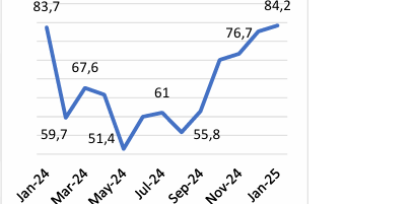

How to Read Financial Reports of Issuers
Investing in the capital market adheres to the principle of transparency. One of the requirements for public companies to be listed on the Indonesia Stock Exchange (IDX) is to uphold the principle of transparency. One way to achieve transparency is by regularly publishing the company's financial reports and various material information that can affect the company's performance. The aim is to help investors make informed investment decisions. Since a company's fundamentals will affect its stock price, the financial report is the first document that investors in the capital market should read.
A financial report is a record of a company's financial information for a specific period. Generally, financial reports are published by the company every three months and annually after undergoing an audit process. Investors must know how to read and analyze the financial reports of issuers listed on the IDX. The purpose of this analysis is to determine whether the company's performance is good or not, thus assessing the feasibility of the company's stock.
Here are some indicators in the financial report that need to be read to determine whether the company's performance is in good condition:
Net Profit: A good company will show an increase in net profit or profit for the current period. For example, the net profit of issuer ABCD as of September 30, 2020, increased compared to the period ending September 30, 2019.
Return on Equity (ROE): ROE or return on investment is a basic indicator in fundamental analysis. A good ROE is at least 15% per year. If the ROE is less than 15%, it means the company is not profitable.
Dividends: A good company pays dividends of 30-40% or more of its net profit. If a company does not pay dividends, the net profit obtained can be questionable.
Low Debt: The company's debt or liabilities should not be greater than its equity. However, some consider it acceptable if the debt equals the equity.
Low Interest on Debt: A good company has debt with low interest, such as small bank loans and bonds, to keep net profit high.
Positive Retained Earnings: Positive retained earnings indicate that the company is growing well. If retained earnings are recorded as negative, it shows that the company had negative growth in the past.
Asset Turnover (ATO): ATO is sales or revenue divided by the company's total assets. The larger the ATO value, the better.
Inventory Turnover (ITO): ITO is the company's annual revenue or sales divided by its inventory. The larger the ITO value, the faster the inventory turnover.
Current Ratio (CR): CR is the ratio of current assets to current liabilities. A good company has total current assets greater than its current liabilities.
Net Income Margin (NIM): NIM is the company's net profit divided by revenue or sales. A good margin for manufacturing companies is at least 20%, while for trading and distribution companies, it is at least 10%.
Tax Expense: A reasonable tax expense is around 25% of operating profit. A tax burden that is too low can indicate unrealized profits.
Comprehensive Income: The comprehensive income should not differ significantly from the company's net profit to show transparency in income and expenses.
Cash Flow: Cash flow from operating activities should align with the income statement. If the values differ significantly, the reported revenue might only be on paper and not actual cash.
Simple Financial Statements: Financial statements should be presented simply and not complicated so they are easy to read and understand. If the report is too complicated, it should be suspected.
Apart from the points above, what is equally important is that the audit results by a public accountant should state "Unqualified Opinion." Investors can see this in the audited year-end financial report of the company. It is located on the front page under the subtitle "OPINION" with the word "Unqualified." If the financial report holds an "Unqualified Opinion," the risk is lower compared to financial reports with a "Qualified Opinion."




 Back to Home
Back to Home








